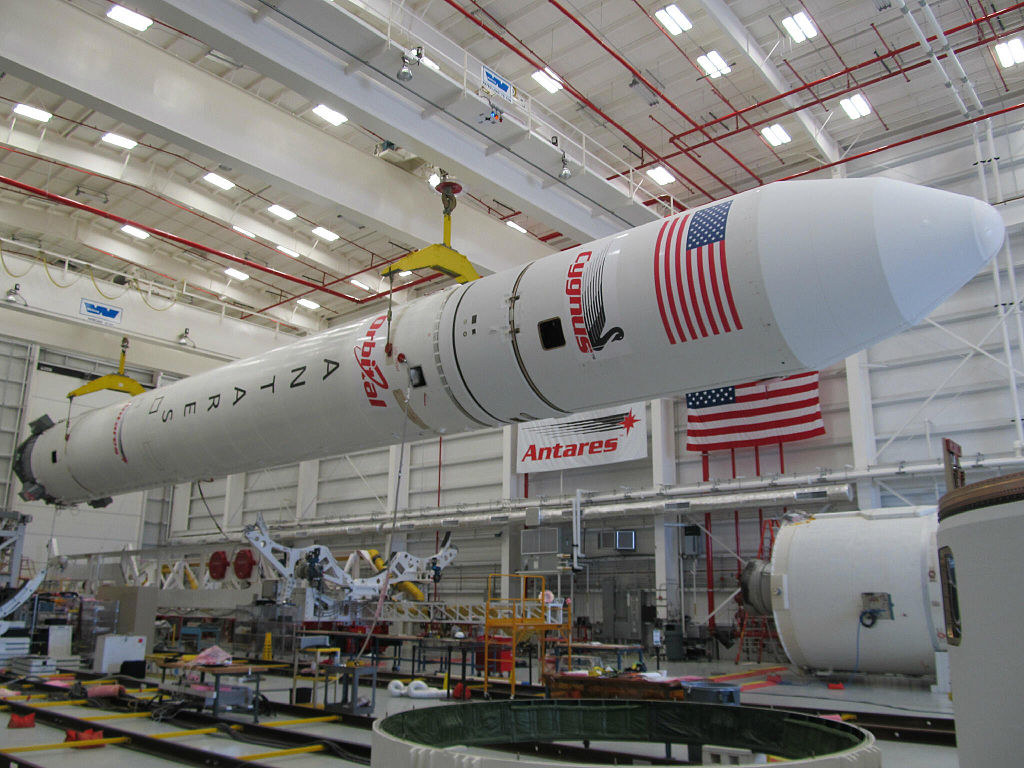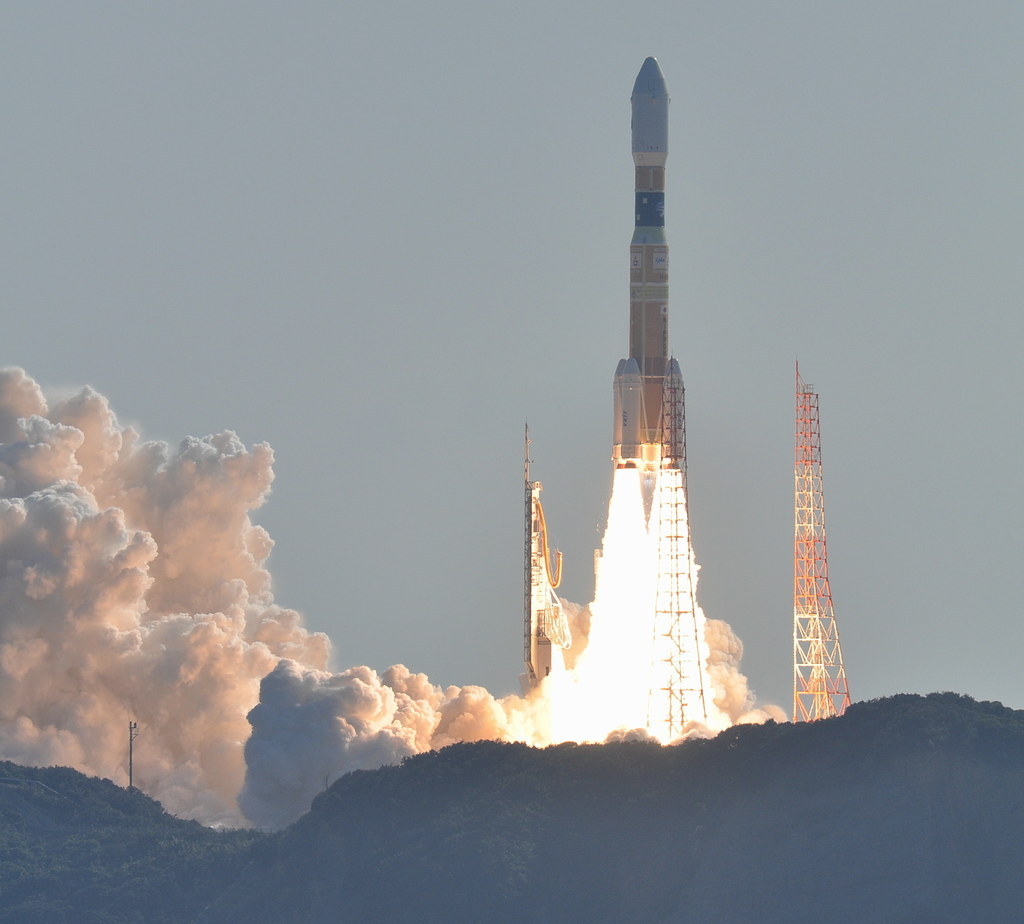Play Rocket Roulette:
Click Play to see 100 simulated launches for each of the six rockets that go to the space station. Each square is a launch, with failures in red. Probabilities based on predicted success rates from spacelaunchreport.com, which applies a statistical correction from the recorded success rates to factor in the inherent uncertainty surrounding newer rockets with fewer prior launches.
High in the Florida sky the rocket climbed, a fireball lifting the 20-story aluminum tower, the pride of a new era in space.
"Vehicle on course, on track," said NASA's George Diller, two minutes into the Falcon 9 rocket's trip to the International Space Station on Sunday morning. Then the tip of the rocket puffed outward, firing amid a swath of smoke before exploding and raining debris over the ocean 28 miles below.
SpaceX's rocket had suffered a "launch vehicle failure," losing its Dragon cargo capsule filled with experiments and equipment. Similar losses happened in May to the Russian Progress mission that went off course, and in October, to the Antares rocket from the Orbital Science Corporation, which exploded on liftoff while carrying cargo for the space station.
Despite more than half a century of space launches since the Soviet Union's 1957 launch of Sputnik, rockets still blow up, go off course, or otherwise misbehave with a steady regularity.
"We expected through the commercial cargo program we would lose some vehicles," NASA's William Gerstenmaier said at a briefing after the explosion. "I didn't think we would lose them all in a one-year time frame. But we have."
Why? "Most rockets are experiments," engineering risk expert M. Elisabeth Paté-Cornell of Stanford University told BuzzFeed News.
A handful of launches doesn't really qualify as the full-blown kind of testing that other machines get, she said. Because there are so few opportunities for trial and error, the odds that a rocket will fail increase with each launch — until there is a failure, after which scientists can figure out what isn't quite right.
Longevity doesn't preclude an accident: The Columbia disaster that killed seven astronauts in 2003 befell NASA's space shuttle program on its 118th mission. Still, rockets with only a few dozen launches behind them are particularly vulnerable to disaster.
On that score, all of the rockets delivering supplies to the space station look young. The Falcon 9 that exploded on Sunday was on its 19th mission. The Antares was on its fifth launch. And the Russian Soyuz 2-1a that sent the Progress cargo ship adrift was on its 7th launch. "These had not flown a lot," Paté-Cornell said. "When something is still an experiment, it is risky."
With 1 failure in 19 missions, the Falcon 9's 95% success rate is fairly typical for the space business. Among its competitors sending cargo to the space station, the Antares rocket has a success rate of 80%, and the Soyuz 2-1a 86%. The Atlas V that will stand in for the Antares on the next Orbital Sciences cargo flight to the space station has a 98% success rate, near the top of the list, after 54 launches. (Also near the top is Russia's Soyuz-U, which carries crew to the station, and has a 97% success rate after 771 launches.)
Space launches face an unforgiving speed limit: a 17,500 mile-per-hour velocity to reach orbit.
For the Falcon 9, that means a metal tower initially at rest and weighing about 1,115,000 pounds needs to accelerate to 10 times the speed of sound and 50 miles of altitude within three minutes after launching. That's the part that worked fine on Sunday's launch. But then an "overpressure event" blew up the smaller second stage of the rocket, according to SpaceX chief Elon Musk.
(An accident investigation led by SpaceX's Hans Koenigsmann, overseen by Federal Aviation Administration inspectors, is expected to take several months to complete.)
That powerful liftoff requires the rocket to ride a controlled explosion skyward, created by mixing fuel, such as kerosene, with liquid oxygen under high pressure and igniting the combination. Rocket engine parts have to withstand high temperatures and intense fuel pressures — roughly 3,800 pounds per square inch for the biggest U.S. rocket, the Atlas V. That's about nine times more pressure than the amount felt inside the much smaller combustion chamber of a diesel engine.
Any extra weight added to the rocket engine reduces the payload that pays for the rocket, at a cost of around $10,000 a pound. So rocket engineers need to keep down the weights of the parts that make the rockets work, shaving margins of error from them like no other machine.
"We're essentially operating systems at the edge of their ability to perform," Gerstenmaier said. "This is a very demanding environment that requires tremendous precision."

Unlike aircraft, where multiple generations of models are tested in their first years, rocket designs are tested and mature at a much slower rate, Paté-Cornell noted.
The Boeing 787, for example, is the 14th generation of a line of passenger jet aircraft since 1958, with some 882 million hours of flight time since then in the family. The Atlas V is the seventh generation of a rocket family that dates to 1957, with about 200 successful launches in that lineage.
"And spacecraft are infinitely more complicated than airplanes," Paté-Cornell said. Even so, changes from propellers to jet engines, or to computer controls over hydraulics, were accompanied by increases in airplane accidents. "With new technologies we see accidents."
For that reason, the three failures of space station resupply missions isn't surprising as much as unfortunate, Marcia Smith of Space Policy Online told BuzzFeed News.
"Rockets blow up sometimes," Smith said. "What's surprising is when three of the four systems go down at the same time." Japan's H-2B rocket — with just four launches — is the only space station resupply rocket with an unblemished record.

What’s more, the loss of the Falcon 9 comes as the White House and Congress are fighting over how much funding to give rocket firms to ship astronauts to the space station.
Congress wants NASA to spend $900 million to support just one company, either the United Launch Alliance run jointly by Boeing and Lockheed, or else SpaceX. The Obama administration has instead requested $1.2 billion to support both.
NASA officials say that months of food are on-hand to support the crew aboard the space station until another cargo mission arrives. The loss of experiments and a docking adapter were "a blow to us," Gerstenmaier said, but the crew is not in danger.
"Although NASA is putting a positive spin on the implications of the failure for the International Space Station, there is no possible way that three failures of supply missions can be anything but negative," space policy expert John Logsdon of George Washington University told BuzzFeed News by email.
Some of the lost experiments aboard the Falcon 9's Dragon capsule included student efforts that were copies of ones lost in the Antares explosion last year.
"The loss of the Dragon's cargo to me is the biggest impact of the failure," Logsdon said. "SpaceX will find the problem, fix it, and get back to flying. How many of the experiments can be re-created is another question."
Orbital launch speed is 17,500 miles per hour. A previous version of this story misstated the velocity.


